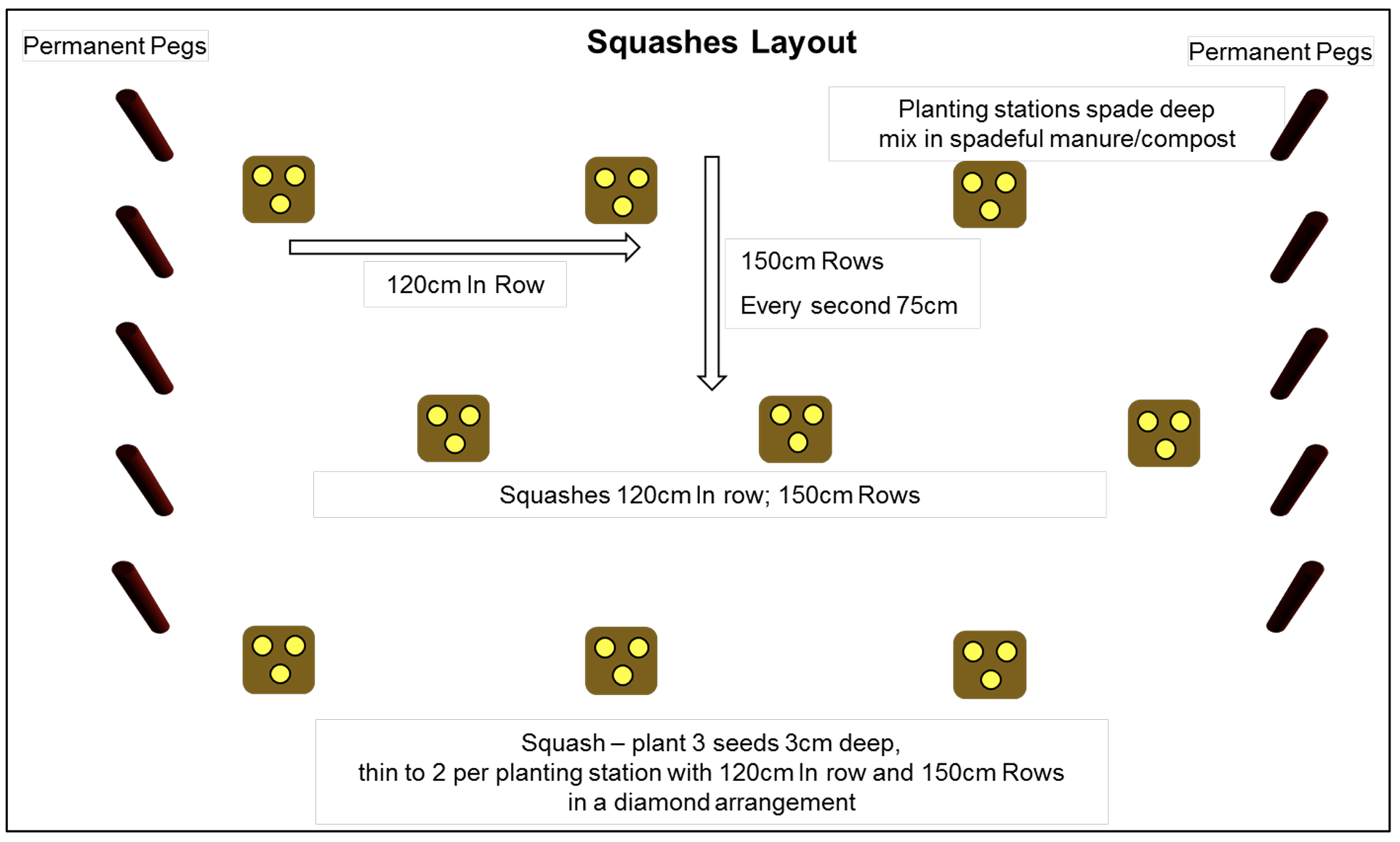Squashes include pumpkin, butternut, gemsquash, water melon, zucchini and patty pans and are excellent sources of Vitamins A, C and E as well as a diverse group of anti-oxidants. Plant squashes in spring to early summer with optimal temperature ranging 18-28°C. They do not tolerate cold and should only be planted after any risk of frost has passed.
Layout
Planting squashes has many options but a simple method is to prepare planting stations at 120cm between plants and 150cm between rows.
Placing the Measuring Rope
Place a 60cm measuring rope from one 75cm permanent peg to its adjoining 75cm permanent peg on the opposite side. Make sure the rope is taut and straight by lifting and dropping it.
Remove God’s Blanket
Move God’s Blanket 30cm downslope from every second measuring rope marker or 120cm interval to expose the soil.
Digging Planting Stations
Prepare a spade wide and deep sized hole, every 120cm in the row, by removing the soil 20cm deep and 20cm wide. Repeat this every second row at 150cm intervals creating a diamond arrangement.
Correcting Acidic Soils
To correct acidic soils and allow for readily available plant nutrients mix in 2 tablespoons of woodash/bonemeal or 3 teaspoons of lime, with soil from the planting stations.
Compost/Manure
Mix in a spade full of manure or compost with the soil from each planting station. When using manure, fill with the mix leaving 6cm deep and then place a 3cm plain soil separation layer to prevent seed burn. When using compost, fill with the mix leaving the 3cm planting depth remaining as compost won’t burn the seed.
Planting Seed
Place 3 seeds in each planting station, 10cm apart in a triangle and cover level with plain soil from the downslope heap. After germination, thin down to just 2 plants per station.
God’s Blanket
Once the plants are about 10cm tall replace the blanket right up against the plant stems. Ensure the blanket is at 100% cover and 2.5cm thick to suppress weed growth and conserve moisture.
Pest Control
Your first line of defence against pests and disease is to keep the plants stress free by having healthy soils, thick mulch cover and an excellent supply of nutrients. Any organic pest management control must focus on prevention rather than cures.
Powdery mildew can be a major disease with the squashes. After rains or misty conditions, spray twice per week with a mixture of 1 part milk to 9 parts water with a teaspoon of liquid soap, to keep powdery mildew under control (See Chapter 5). Observe your plants regularly and if diseased plants have been identified it is often the best option to simply remove those plants and dispose of them far away from the garden.

